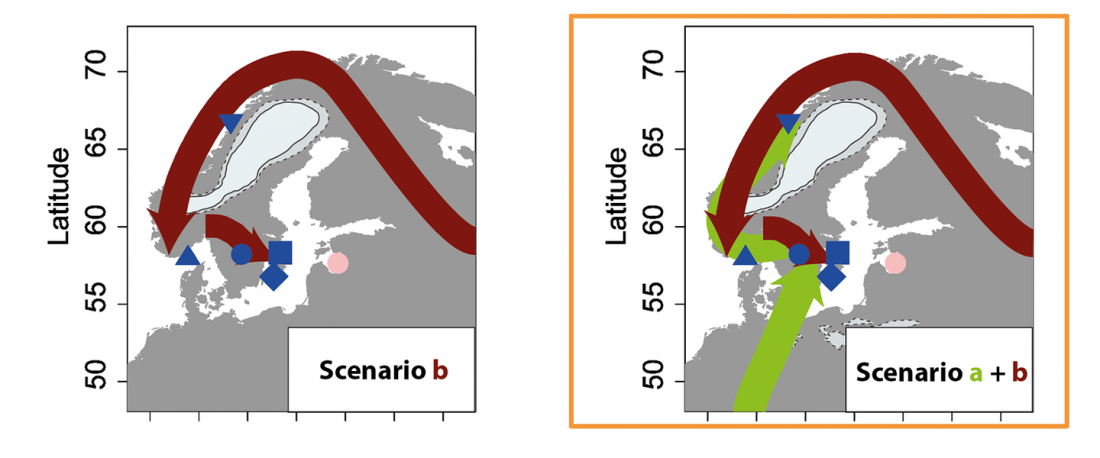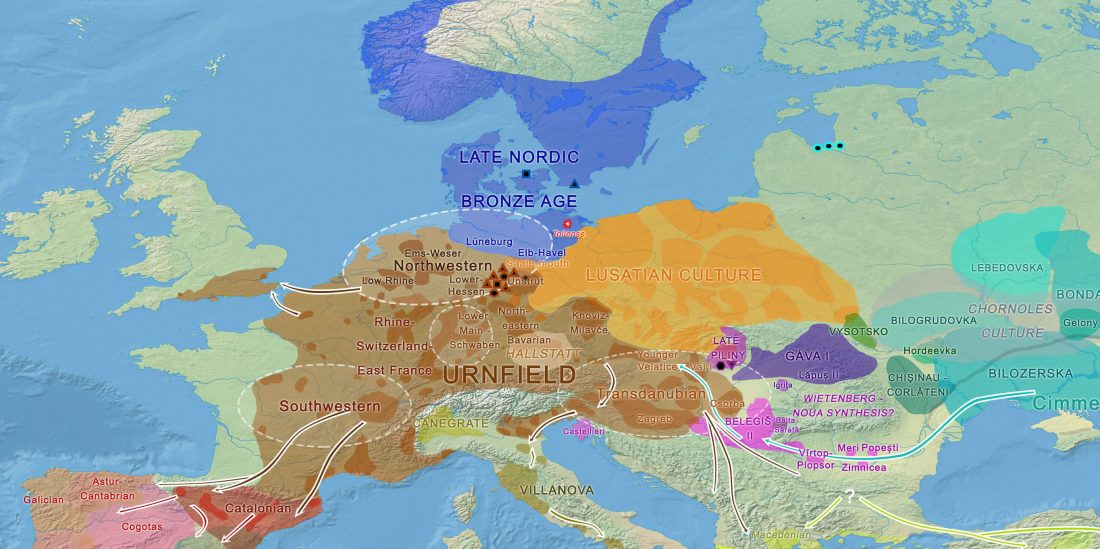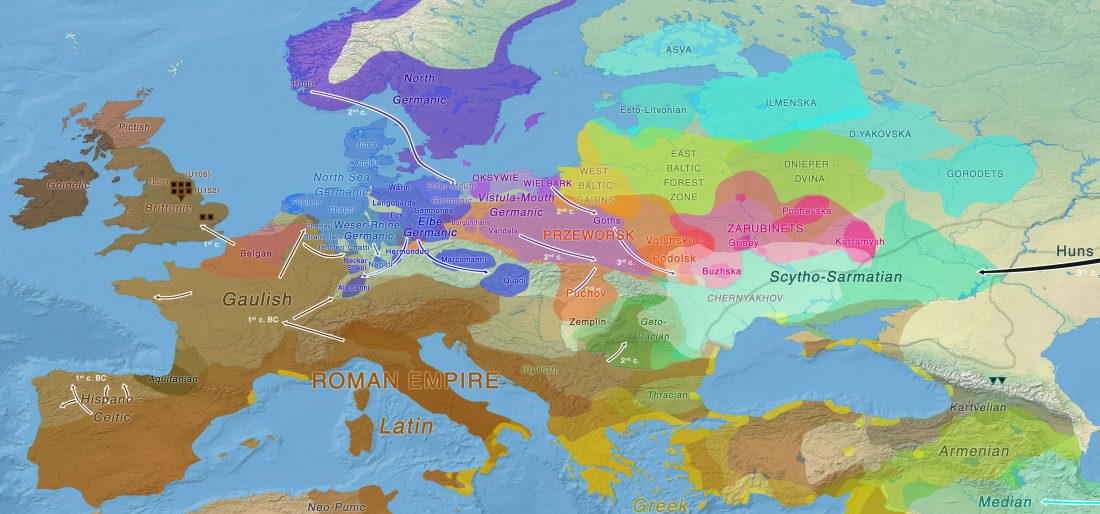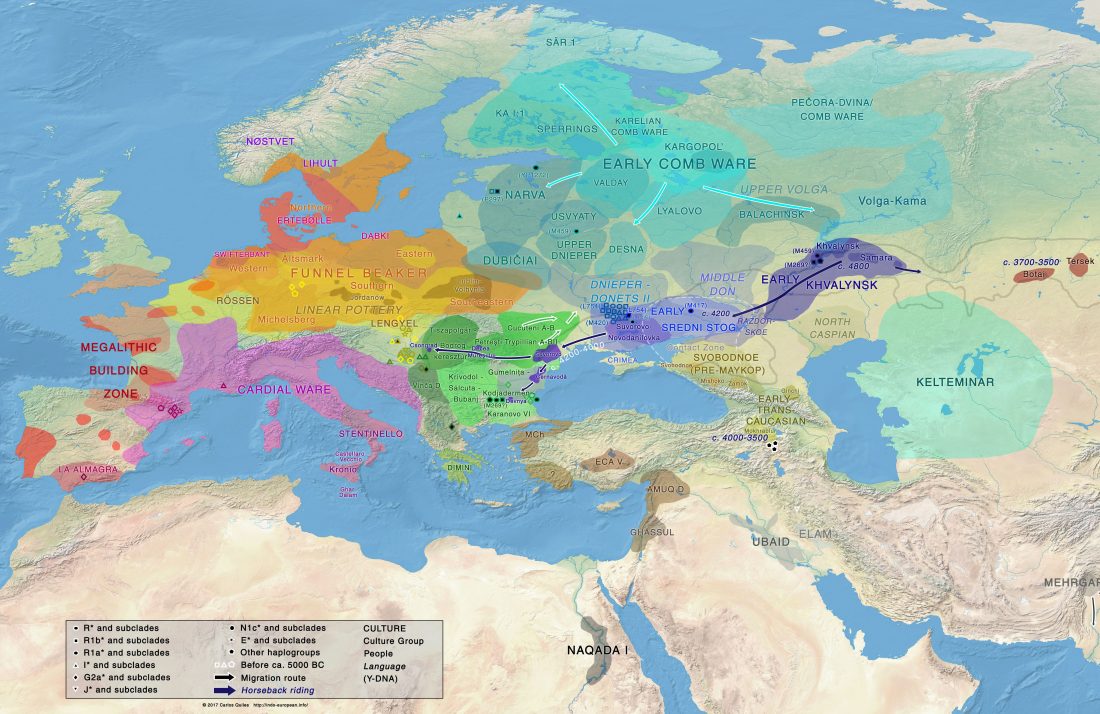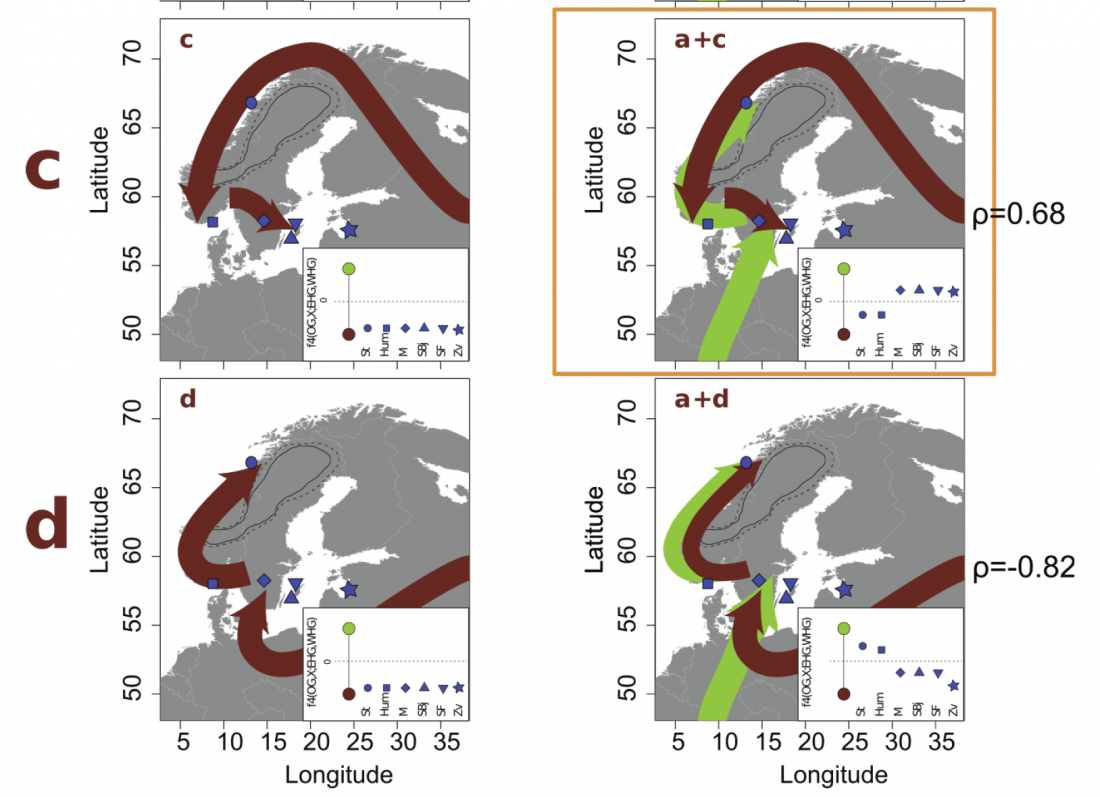Pontus Skoglund writes (and shares publicly) his perspective on early postglacial migrations of hunter-gatherers into Scandinavia, in Northwest Passage to Scandinavia (Nat. Ecol. Evol.): an initial migration from the south and a second coastal migration north of the Scandinavian ice sheet.
He sums up the recently published Open Access paper Population genomics of Mesolithic Scandinavia: Investigating early postglacial migration routes and high-latitude adaptation, by Günther, Malmström , Svensson, Omrak, et al. PLoS Biol (2018) 16(1): e2003703, based on preprint at BioRxiv Genomics of Mesolithic Scandinavia reveal colonization routes and high-latitude adaptation (2017).
Abstract:
… Read the rest “The preferred northwest passage to Scandinavia”Scandinavia was one of
